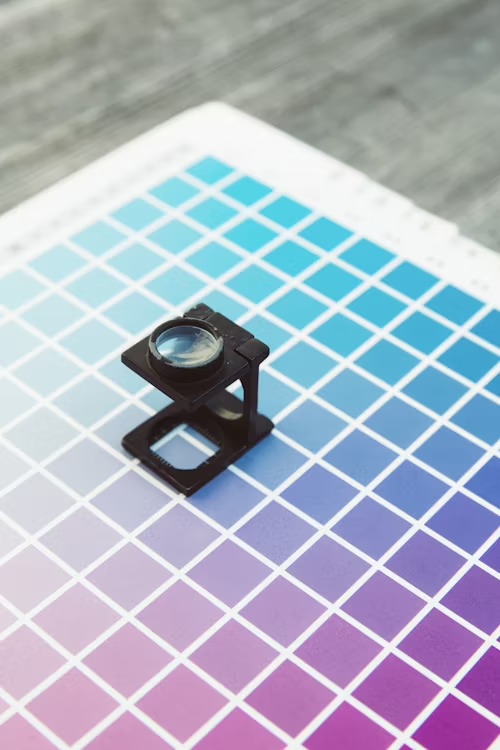Explore the psychological effects of color and how to use it effectively in your event graphics
Color psychology plays a pivotal role in how attendees perceive and react to event graphics. By understanding the psychological impact of different colors, you can design graphics that not only catch the eye but also evoke specific emotions and moods, enhancing the overall event experience. This guide explores how to use color psychology effectively in your event graphics to influence mood and create a memorable atmosphere.
Understanding Color Psychology
Color psychology is the study of how colors affect human emotions and behaviors. Different colors can evoke various psychological responses, and understanding these effects can help you design event graphics that align with your event’s objectives and desired ambiance.
1. The Basics of Color Psychology
A. Warm Colors
- Red: Known for its intensity and energy, red can increase excitement and urgency. It’s often used to grab attention and create a sense of enthusiasm. However, it can also evoke feelings of aggression or stress if overused.
- Orange: This color exudes warmth and enthusiasm. It’s often associated with creativity and adventure, making it ideal for events aiming to energize and engage attendees.
- Yellow: Yellow is linked to happiness and optimism. It’s a great choice for creating a cheerful atmosphere and promoting feelings of joy and positivity.
B. Cool Colors
- Blue: Blue is known for its calming and trustworthy qualities. It’s often used to create a sense of tranquility and professionalism. It can also enhance focus and productivity.
- Green: Associated with nature and renewal, green evokes feelings of balance and harmony. It’s perfect for creating a soothing environment and promoting well-being.
- Purple: Purple combines the stability of blue and the energy of red. It’s often used to convey luxury, creativity, and mystery, making it ideal for high-end or artistic events.
C. Neutral Colors
- Black: Black represents sophistication and elegance. It’s often used for formal events and can also create a dramatic effect when paired with other colors.
- White: White symbolizes purity and simplicity. It’s a versatile color that can make spaces feel more open and clean, and it’s often used to convey clarity and freshness.
- Gray: Gray is associated with neutrality and professionalism. It’s a good choice for creating a balanced and modern look, but it can sometimes feel cold or uninspiring if overused.
Applying Color Psychology to Event Graphics
2. Setting the Mood
A. Align Colors with Event Goals
- Corporate Events: For professional and corporate events, use blue and gray to create a sense of stability and trustworthiness. Accent with white to maintain a clean and sophisticated look.
- Social Gatherings: For social events or celebrations, warm colors like orange and yellow can energize attendees and create a joyful atmosphere.
- Creative Events: Use vibrant colors like purple and green to stimulate creativity and innovation, while ensuring the colors complement the event’s theme.
B. Enhancing Visual Hierarchy
- Highlighting Key Information: Use contrasting colors to draw attention to important information. For instance, using red or orange for call-to-action elements can make them stand out.
- Creating Flow: Use color gradients or a consistent color scheme to guide attendees through the event space or graphic materials, creating a cohesive and intuitive flow.
3. Designing with Color Harmony
A. Color Schemes
- Monochromatic: Use variations of a single color to create a harmonious and cohesive look. This approach is ideal for maintaining a unified theme.
- Analogous: Choose colors that are next to each other on the color wheel for a pleasing and harmonious effect. This scheme is great for creating a serene and visually appealing design.
- Complementary: Use colors opposite each other on the color wheel to create a vibrant and high-contrast look. This scheme is effective for drawing attention and creating dynamic visual impact.
B. Testing and Adjusting
- Visual Testing: Test your color choices in different lighting conditions and on various screens to ensure they appear as intended. Colors can look different in different environments, so it’s essential to check their effectiveness.
- Audience Feedback: Gather feedback from a sample of your target audience to understand their emotional responses to the colors used. Adjust your color choices based on this feedback to better align with your event’s objectives.
4. Practical Tips for Event Graphics
A. Integrating with Event Theme
- Consistency: Ensure that the colors used in your graphics align with the overall theme of the event. Consistent use of color helps reinforce the event’s branding and message.
- Versatility: Choose colors that work well across various graphic elements, including signage, digital displays, and promotional materials. This versatility ensures that your graphics look cohesive and professional.
B. Accessibility Considerations
- Contrast: Ensure there is sufficient contrast between text and background colors to enhance readability for all attendees, including those with visual impairments.
- Color Blindness: Consider colorblind-friendly palettes to ensure that your graphics are accessible to everyone. Tools are available to simulate how colors appear to individuals with different types of color blindness.
Conclusion
Utilizing color psychology in your event graphics can significantly enhance the mood and overall experience of your event. By carefully selecting colors that align with your event’s objectives and creating a cohesive visual identity, you can create graphics that resonate with attendees and leave a lasting impression.
EventGraphics is your expert partner in designing impactful event graphics that leverage color psychology to enhance mood and engagement. With our experience and creative approach, we ensure that your event graphics are visually compelling and effective.
EventGraphics – The Event Graphic Specialists always deliver exceptional design solutions tailored to your event’s needs. Contact us today to learn how we can help you create memorable graphics that influence mood and elevate your event experience.

